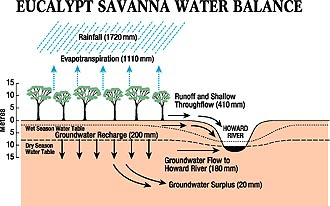Since Jayda and i waned to go to a different location and travel, we decided we wanted to go to Australia so after a long flight we got here and the first thing we wanted to look at was the plants and their adaptations so we did, here is our conclusion.

Firstly, the Jarrah tree in the Australian Savanna is a 40- 50 meter high tree with a very long and distinct trunk. This trunk is is long and straight, and does not include any branches on this tree at, but is well known for its long characteristics. One very important adaptation that this tree has is called a lignotuber also known as underground swelling in the soil. This underground swelling is important because, the ground store carbohydrates. These carbohydrates allow the tree to grow back after a forest fire, or if anything causes it to catch on fire. This prevents deforestation because of how this tree is able to grow back.

Another eye catching plant that is more well known for its color and how it makes any garden look fantastic is this plant called a Kangaroo Paw. This plant is able to grow up to 10 centimeters long, and is loved by mostly all of the organisms whether, it is for its characteristics or if its for what this plant can produce to organisms, which is nectar. Many bees, and other organisms are often seen drinking nectar on this plant, but this plant has many more adaptations and can do much more as well. One adaptation this plant has is woolly hairs that help make it taste weird to its predators that are tying to eat the plant, so that it can survive.

Lastly, this organism is called the Cycas Armstrongii which is known for its very green and fluffy leaves. There is a low abundance of this plant because it is not fire resistant, and unluckily always caught on fire. Although, there is a low abundance of this plant, there are still characteristics and adaptations that this plant has that makes it relevant in this type of biome. For example, one adaptation it has is being able to cope with the dry season by obtaining moisture from lower layers of soil. Without this adaptation this plant would possibly be extinct due to all of the problems it faces on its own.























